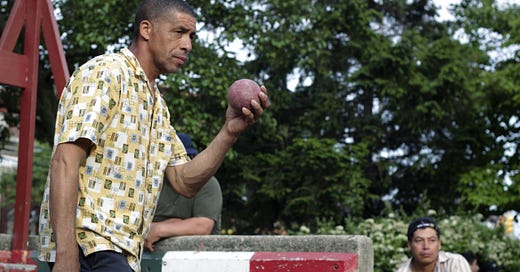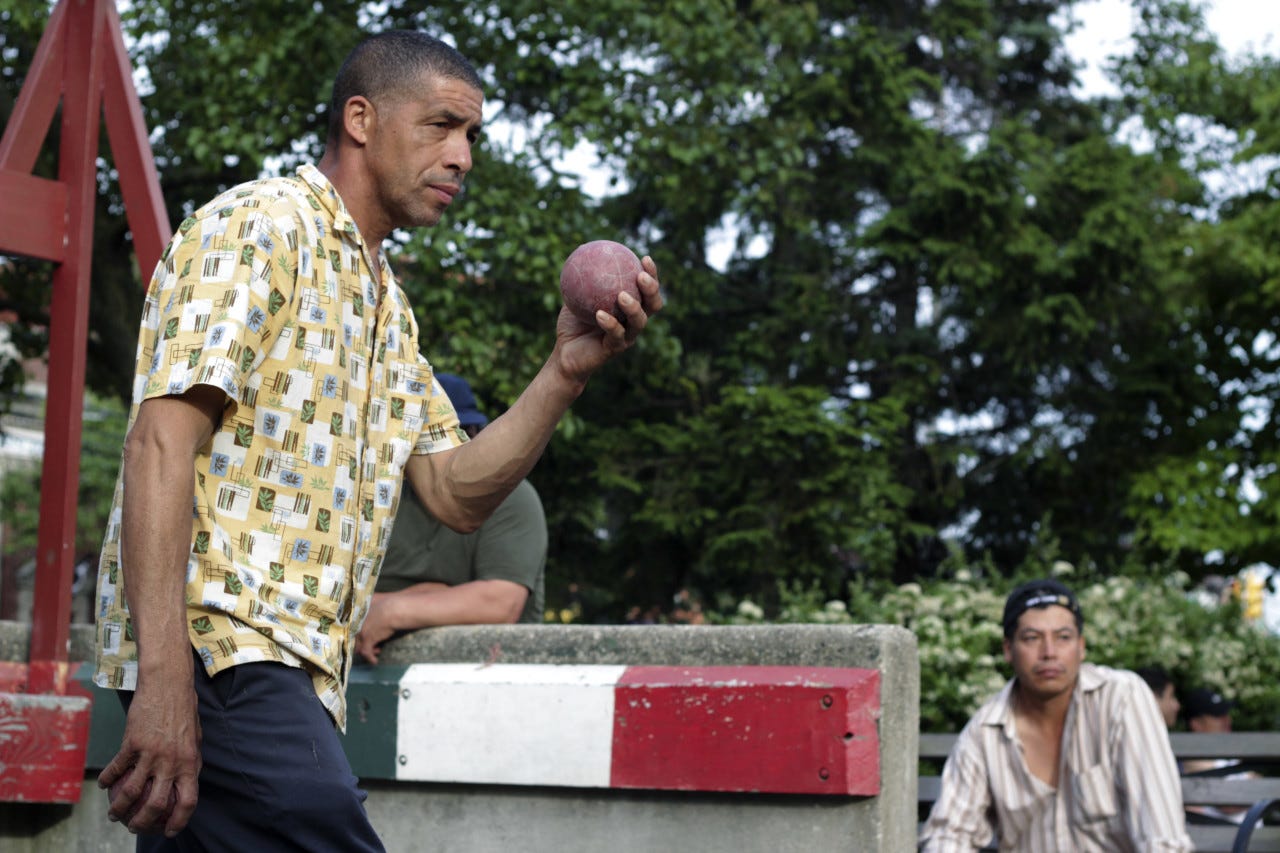The Bocce Boys of Corona
In a rapidly changing corner of Queens, young Latinos and aging Italians come together for epic showdowns on the bocce court.
“Red!” Nicky shouts across the court. He lets the ball drop to his feet and walks towards Dennis, who’s trying to figure out whether red or green is closest to the pallino.
Nicky’s gait is predatory. The agitated octogenarian has been playing here for hours without so much as a sip of water. “Red, red, red, red, red!” he insists. If the call is red, then his opponents will have the lead. But his team will gain the next throw, giving them a chance to roll closer to the pallino or shoot the infringing red out of range. “Whattaya talk about? Red!”
“Green,” replies Dennis, pulling a worn tape measure out of his pocket. He draws the coiled strip from the pallino to the nearby green ball, notes the distance, then does the same to a red ball sitting just a few inches further in another direction.
“Not even close,” he affirms, while Nicky—also known in this part of Queens as Nicola, or Nico—wedges his right foot between the red ball and the pallino. His left foot follows, then…
Keep reading with a 7-day free trial
Subscribe to Narratively to keep reading this post and get 7 days of free access to the full post archives.




